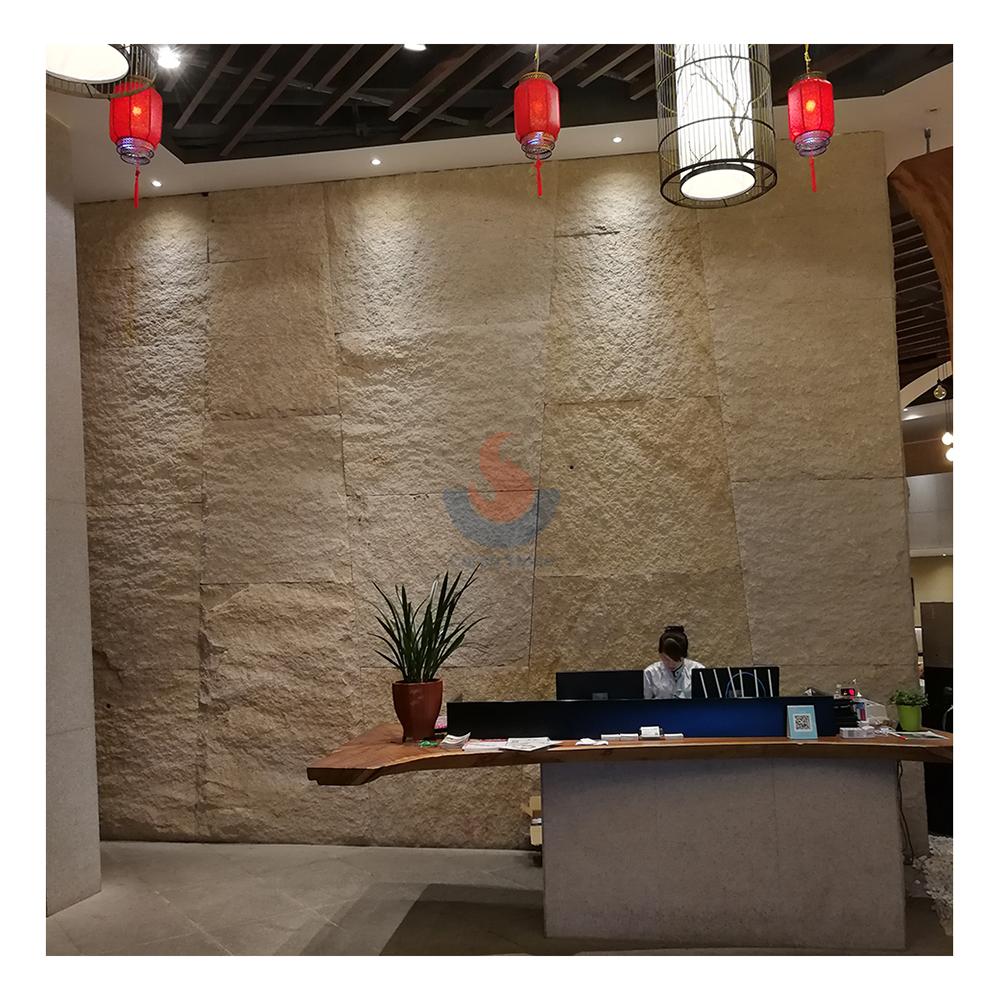Over the long years of the earth, granite has become a geological treasure with its hard texture and diverse colors. From China and India in Asia to Italy in Europe, from Canada in North America to Brazil in South America, these nations not only have rich granite resources but also are significant in the worldwide building and decoration industry. This article will take you through these countries to explore the global distribution and mining status of granite, and at the same time think about how to make rational use of this precious resource while protecting the earth.

Split face natural granite stone wall cladding stone
Asia’s Granite Treasure House
Asia, as one of the world’s largest granite producers, has many high-quality granite mines. Popular selections on the worldwide scene are China’s “Nanshan Granite” and India’s “Black Gold Sands”. The granite in these countries is famous for its excellent texture and stable color, and is widely used in architecture, decoration and sculpture. But with growing demand, how to strike a balance between mining and preservation has become a pressing issue to address.
Granite Art in Europe
With their long-standing stone processing expertise and creative ideas, European nations such Italy and Spain have turned granite into architectural and artistic marvels. The granite in these countries is not only used in local buildings, but also exported to all parts of the world, becoming a bridge for cultural exchanges. Simultaneously, European nations have also given environmental preservation in granite mining and usage high priority.
Granite landscape in North America
With their great geographic spread and abundance of granite resources, Canada and the United States in North America offer endless opportunities for architectural and landscape design. From commercial buildings to private homes, granite is used everywhere. North America has advanced granite mining technology, but while pursuing economic benefits, it also faces challenges in environmental protection and resource sustainability.
Granite colors in South America
With its distinctive granite colors and textures, Brazil and Argentina in South America have given the worldwide market fresh choices. The granite in these countries has become a new favorite for designers and architects because of its rarity and aesthetic value. Still, ecological preservation and social responsibility have to be considered even as we extract these valuable resources.
Granite potential in Africa
Although countries such as South Africa and Egypt in Africa started late in granite mining, their huge potential and underdeveloped resources indicate an important position in the international market in the future. The varied and vibrant granite resources of Africa present fresh choices for the worldwide market. At the same time, African countries are also actively exploring sustainable mining models.
Balance between environment and resources
Finding a balance between preserving the environment and logically exploiting resources becomes a worldwide concern as the demand for granite rises everywhere. Governments and companies are seeking sustainable development solutions, such as improving mining efficiency, reducing waste, and promoting recycling, to ensure the long-term availability of granite resources.
Innovative technology and recycling
In order to reduce dependence on granite resources, countries are developing and applying new technologies to improve mining efficiency, reduce waste, and promote recycling. These innovations not only help protect the environment, but also bring new opportunities to the granite industry. For accurate mining, for instance, or for creating new materials to substitute some granite uses, robots can be used.
International cooperation and resource sharing
Across the globe, countries are strengthening cooperation, sharing granite resource information, and jointly responding to resource shortages and environmental challenges. By means of worldwide cooperation, this valuable natural resource can be better managed and safeguarded. For instance, a worldwide granite resource database is created to encourage technological sharing and exchanges of best practices.

Large outdoor waterwall stone carved black granite water stone fountains
Granite, this ancient rock, is not only a witness to the earth, but also an important part of human civilization. With limited resources and environmental problems, we must coordinate worldwide to guarantee the sustainable use of granite resources by creative technologies, recycling, and international collaboration so leaving a priceless natural legacy for next generations. Let us work together to create a harmonious and sustainable future.





